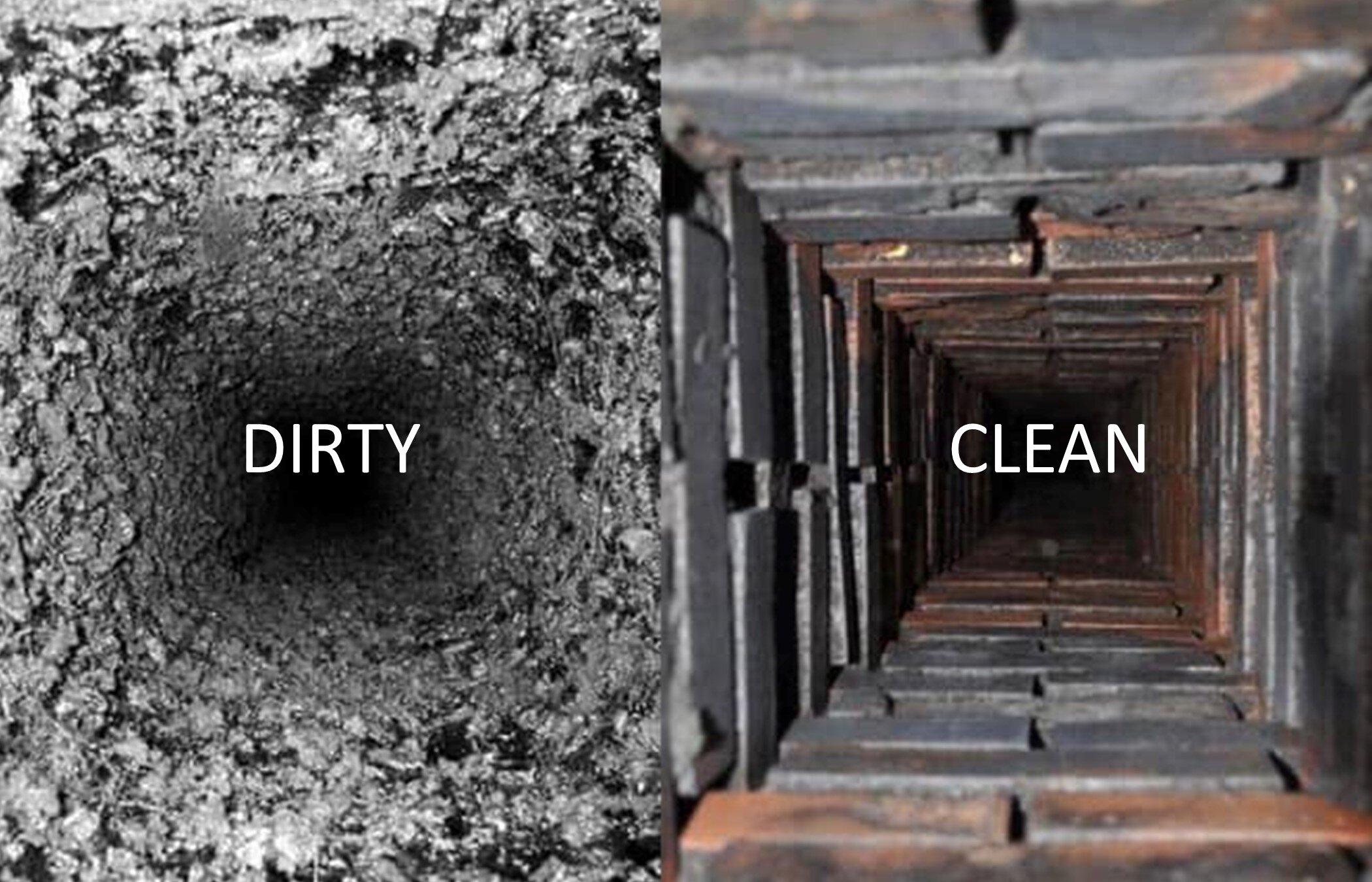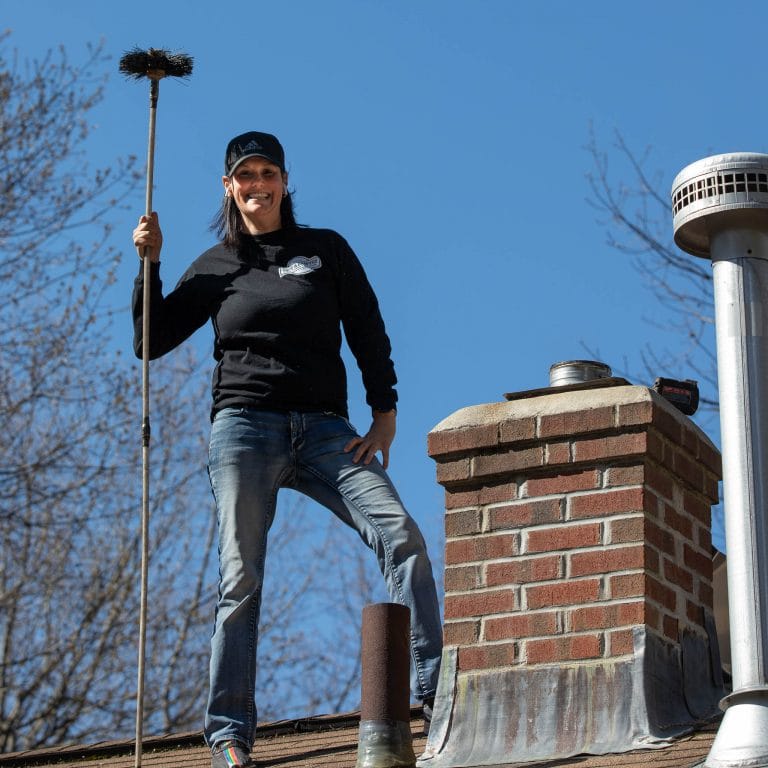chimney cleaning san jose Solutions: Recovering Your Fireplace Effectiveness
chimney cleaning san jose Solutions: Recovering Your Fireplace Effectiveness
Blog Article
How to Determine Usual Problems That Require Chimney Fixing in Your Home
Recognizing usual problems that require smokeshaft repair in your house is essential for keeping both security and performance. Routine assessments can reveal considerable indicators such as creosote accumulation, noticeable splits, and indications of wetness breach. Additionally, smells and draft issues frequently indicate much deeper complications that may not be immediately apparent. Understanding these indication is important for prompt treatment, yet numerous house owners neglect them. What are the particular actions one can require to guarantee their smokeshaft remains in optimum condition? The answer might discover more than you anticipate.

Indications of Creosote Buildup
Among one of the most important indicators of smokeshaft concerns is the build-up of creosote, a by-product of wood combustion. This compound types when smoke cools down and condenses on the wall surfaces of the chimney, leading to a thick, tar-like residue. With time, creosote build-up can present substantial security risks, consisting of a boosted threat of smokeshaft fires.
Property owners need to be watchful in observing signs of creosote accumulation. One primary indicator is the visibility of a solid, pungent smell emanating from the chimney or fire place, particularly during cooler months when the fireplace remains in usage. chimney cleaning san jose. Furthermore, dark, shiny down payments on the chimney flue or in the firebox may indicate extreme creosote accumulation
Normal assessments can aid identify the degree of the problem. It is recommended that a professional smokeshaft sweep conducts an annual evaluation to assess creosote levels and execute needed cleanings. If homeowners notice any type of modifications in the efficiency of their fire place, such as lowered draft or difficulty in starting a fire, it might suggest a creosote concern. Dealing with these signs quickly is vital to preserving a secure and reliable chimney system.
Noticeable Cracks and Damage

Visible fractures and damage in a chimney can offer as substantial caution indications of underlying architectural issues that might require prompt interest. These imperfections can emerge from various aspects, consisting of temperature fluctuations, clearing up of the home, and damage of materials over time. It is important to assess both the exterior and interior of the smokeshaft for any kind of indications of fracturing, spalling, or falling apart masonry.
Hairline fractures may indicate minor settling, while bigger cracks can indicate a much more significant structural compromise. Home owners must additionally be conscious of any leaning or turning of the chimney, as this can posture safety and security risks and indicate foundational concerns.
Regular evaluations by a certified professional can identify these noticeable indications early, preventing extra considerable repair work down the line. If you see any cracks or damage, it is a website here good idea to consult a chimney specialist who can examine the circumstance and advise suitable fixing choices (chimney cleaning san jose). Ignoring noticeable splits can result in boosted expenses and prospective threats in the future, emphasizing the value of prompt treatment
Water Leaks and Dampness
Recognizing water leaks and dampness breach in a smokeshaft is vital for keeping the honesty of both the chimney structure and the home. One of the most typical indicators of moisture concerns is the visibility of efflorescence, which appears as white, grainy deposits on the smokeshaft's exterior.
Furthermore, home owners must inspect for signs of water spots on indoor wall surfaces or ceilings near the chimney, as these may suggest leakages. Regular assessment of flashing, the product that seals the chimney to the roof, is vital. Damaged or incorrectly set up flashing can enable water to leak into the chimney framework.
Throughout heavy rainfall or snowmelt, take notice of merging water near the chimney base or on the roofing system. This can read what he said symbolize inappropriate drain or obstructions that need to be resolved. Regular maintenance and timely repair work are essential in preventing moisture-related problems, ensuring the smokeshaft continues to be useful and risk-free for use.
Undesirable Smells

One more possible resource of odor is animal intrusion. Birds, raccoons, or various other wildlife may nest in the smokeshaft, resulting in the decomposition of natural materials, which creates nasty scents. In such situations, it is crucial to deal with the issue promptly to make sure both the safety and security and comfort of your home.
Furthermore, stationary air in a chimney can add to moldy odors, often indicating an absence of appropriate ventilation. Maintaining sufficient airflow is vital to prevent these problems and make sure the effective operation of your smokeshaft system.
Regular inspections and cleansing by an expert can aid recognize and fix these odor-related troubles, protecting your home from future problems.
Poor Draft and Smoke Issues
A consistent bad draft in a chimney can substantially prevent the reliable operation of a fire place or timber cooktop, leading to smoke-related problems that jeopardize interior air quality. This condition commonly causes smoke rippling back right into the home, developing pain and possible carcinogen for owners.
Several factors can add to navigate to this site inadequate draft issues. Obstructions brought on by creosote buildup, debris, or animal nests can protect against correct air flow, requiring smoke to reverse direction. Furthermore, a poorly sized flue or smokeshaft can impair ventilation, making it hard for smoke to escape effectively.
Climate condition, such as strong winds or reduced air pressure, can additionally affect chimney performance, intensifying draft concerns. Property owners may observe symptoms like excessive smoke, remaining odors, or problem starting fires.
It is crucial to resolve these issues quickly, as extended exposure to smoke can result in respiratory system problems and other health and wellness problems. Normal chimney evaluations and upkeep are necessary to recognize and correct inadequate draft conditions. Consulting a professional smokeshaft move can make sure detailed cleansing and assessment, bring back optimum functionality to your chimney system and boosting the safety and security of your home.
Conclusion
In summary, regular examination of smokeshafts is important for recognizing usual issues that require repair. Dealing with these problems proactively can boost the safety and efficiency of the smokeshaft system, inevitably stopping more extreme damage and ensuring optimum performance.
Report this page